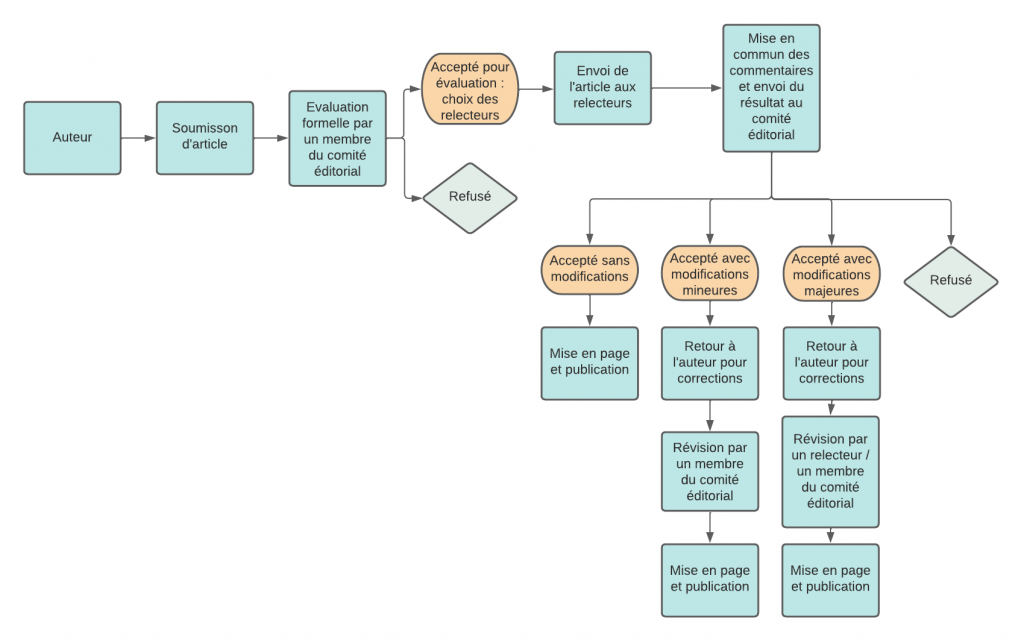The CNRS’ Direction de l’Information Scientifique et technique defines peer review as follows: “Peer review refers to the approval of an article by an editorial committee composed of scientists who are experts in the same disciplinary field as the article’s content. This process is intended to guarantee its scientific quality”. This process is generally well known to all. Yet, how can it be implemented within one’s own journal? How does it work? In practice, what does a reviewer do? What skills are expected of a reviewer?
How does it work?
Reviewing is an essential phase in scientific publishing if one wants to be visible on a distribution platform. In its “Quick Guide” entitled How to review manuscripts, Elsevier highlights the importance of peer review. Indeed, it is essential because it guarantees the quality of published articles and ensures that previous work is acknowledged. The assessment also allows to uncover plagiarism and intellectual fraud.
Tasks
Reviewer or evaluator: the reviewer is the person who assesses the scientific quality of the articles. He comments and provides advice on whether or not to publish an article.
Author: the author of the article (or the main author), the one who submits the article to the journal.
Editorial Committee: decides on editorial policy and carries out all tasks related to the smooth running of the journal.
Scientific Committee: has an advisory role. It is composed of specialists in the fields covered by the journal and proposes scientific orientations for the journal.
Process
The review process follows several steps:

Accessible PDF version of the scheme.
Types of peer reviews
There are several types of peer reviews. The most common are:
- single-blind,
- double-blind,
- triple-blind
- and open-identities.
Publons, Clarivate‘s tracking tool for scientific publications, describes the different types of peer reviews, and clearly states that this list is not exhaustive (see illustration on the right):
Evaluation process
Selection of reviewers
It is up to the editor to choose his reviewers.
Cécile Fovet-Rabot, in her article Réviser un article scientifique en 6 pointsindicates that: “For each article, the editorial committee chooses 2 or 3 scientific expert reviewers among the journal’s authors, its own scientific network and the list of reviewers provided by the authors of the article that is to be reviewed”. Yet a potential reviewer may refuse for lack of time, lack of expertise, conflict of interest, etc. It seems that editors are facing an increasing number of refusals, as Publons points out: “In 2013, an editor had to invite an average of 1.9 reviewers to get one review done. By the end of 2017, this had increased to an average of 2.4 invitations for every completed review. If this trend continues, by 2025, an average of 3.6 invitations will be required to complete a single review”.
The reviewer’s qualifications
In their ABC de la révision par les pairs, Eva Charlebois, Louise Mallet and Julie Méhot list the qualities of reviewers: scientific expertise, respect for deadlines, absence of conflicts of interest, motivation and respectful attitude. The reviewer’s comments must be respectful, constructive and strictly limited to the scientific aspect of the reviewed text. Comments should help to specify an idea, clarify and improve the quality of the scientific work.
The reviewer appears to be often considered as an obstacle by the authors. Although the vast majority of reviewers have a professional conduct, some irregularities have been observed. Hence, as Andreas F. Mavrogenis, Andrew Quaile et Marius M. Scarlat indicate in their article The good, the bad and the rude peer-review « A rude peer-review is unfair and biased for reasons unrelated to the quality of the manuscript such as the nationality, gender, English language criticism, opposite theory or conflicts of interest “. To prevent such conduct, editors are providing guidance for reviewers.
Assessment criteria
Criteria regarding journals
Journals may establish good assessment practices and some have synthesised them in the form of a grid for the reviewer. These good practices aim to provide a debatable review framework based on precise criteria: quality of the language, respect for a methodology, relevance of figures, originality of the content, etc.
This assesment grid also takes into account the reviewer’s opinion regarding the manuscript: accepted as is, accepted with modifications (major or minor), rejected.
Here are some examples of assesment criteria for reviewers:
Open Reviewers Toolkit
The American platform PREreview has an online Open Reviewers Toolkit which offers 3 guides (Bias Reflection Guide, Reviewer Guide and Review Assessment Rubric) for improving the quality of reviews for scientific journals.
Peer review developments
A study by Publons highlights the fact that the volume of articles to be reviewed continues to grow whereas it is increasingly difficult to find reviewers. New evaluation systems are emerging, offering alternatives to the traditional single or double-blind assessment mainly in the field of open evaluations: identities of authors and reviewers are revealed, and comments are public. Also, the entire scientific community is invited to participate: reviewers are not chosen by the editor.
Peer Community in
Peer Community in is a pre-publication database based on article recommendations. The authors begin by filing their article in an open archive. Next, they submit their article on the PCI website, according to its theme. The peer review process can then start, either anonymously or not. A discussion is initiated between the reviewers and the author. If the article is accepted, a recommended version will appear on the PCI website together with all the assessments and the letter of the recommendation. It will then be published by the authors in the Peer Community Journal, in one of PCI’s partner journals or in the journal of their choice.
Review of pre-publications in open archives
BioRxiv, the open biology archive, allows comments from readers: “Readers may add public comments to articles on bioRxiv. Comments are moderated to ensure they conform to the standards of normal professional discourse. Readers are also free to contact authors directly ». Indeed, since 2019, BioRxiv has committed to the TRIP project, Transparent Review in Preprints, and offers new features allowing to comment each pre-publication:

Clicking on it gives access to readers’ comments, reviews by TRIP reviewers, online discussions about the article, automatic reviews, external links and tweets mentioning the article
General information:
https://www.ncbi.nlm.nih.gov/pmc/articles/PMC4975196/
Tools for reviewers (analysis grids, advice, etc.):
https://content.prereview.org/open-reviewers-toolkit-is-now-openly-available/
https://www.cairn.info/revue-systemes-d-information-et-management-2017-4-page-3.htm
https://www.quebecscience.qc.ca/edito/revision-pairs-courtoisie/
https://coop-ist.cirad.fr/evaluer/etre-relecteur/1-accepter-ou-refuser-d-evaluer-un-article
Open evaluation:



